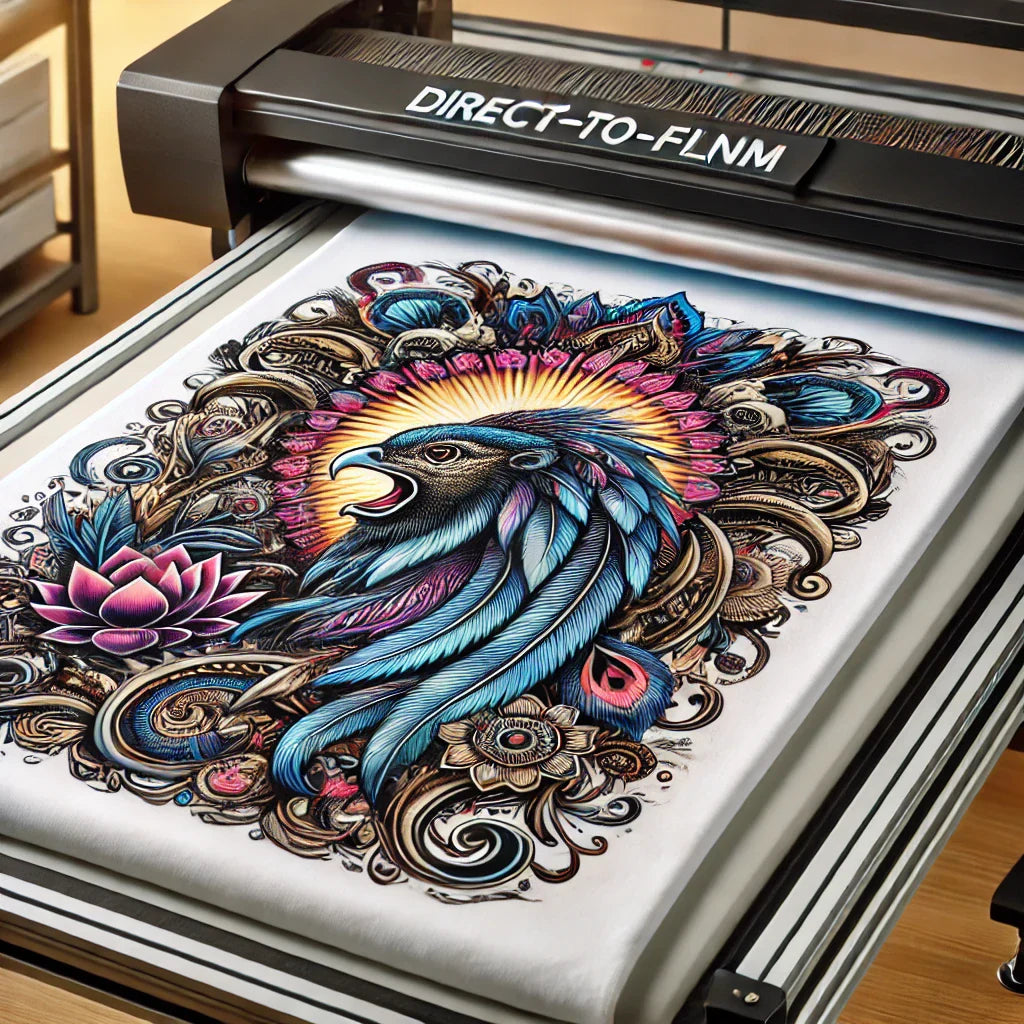
Eco-Friendly and Efficient: The Rise of DTF Printing in Sustainable Apparel Production
Eco-Friendly and Efficient: The Rise of DTF Printing in Sustainable Apparel
The demand for environmentally responsible production is rising quickly in the apparel world. Many brands want printing methods that deliver strong visual results but create less waste. They also look for options that use less energy and support modern sustainability goals. In this shift, DTF printing has become a promising solution. The method offers an efficient workflow, flexible material use, and controlled resource consumption. These benefits allow creators to produce custom designs while reducing environmental impact. As sustainability becomes more important for businesses and consumers, DTF printing offers a balanced approach that combines creativity with responsibility.
How DTF Supports Sustainability Trends
DTF printing aligns well with current sustainability goals. One major advantage is its ability to reduce material waste. Traditional printing often requires multiple setup steps, test prints, and repeated adjustments. These processes use extra ink and transfer materials, which often end up discarded. DTF printing simplifies the workflow, making results more consistent and predictable. Fewer test prints mean less waste, and creators can print only what they need. This helps prevent unnecessary overproduction, which is a common problem in apparel manufacturing.
Another sustainable benefit is the lower energy usage of DTF systems. Many traditional printing methods require high heat, long processing times, or multiple treatment stages. DTF printers typically run with lower power demands and shorter production cycles. For businesses with daily production, the reduction in energy use helps support more sustainable operations. The technology also works for both small studios and large facilities, making it accessible for creators who want to reduce their environmental footprint.
Versatility for Sustainable Brands
One standout advantage of DTF printing is its ability to work on many fabric types. The transfer adheres to cotton, polyester, blends, and textured materials. Because of this, brands can expand their product lines without buying additional machinery. This flexibility makes it easier to use eco-friendly fabrics, such as recycled blends, organic cotton, or reclaimed textiles. DTF transfers maintain strong color quality and durability even on these materials.
This versatility also supports upcycling. Many brands want to reuse leftover inventory instead of throwing it away. With DTF transfers, they can add new designs to old stock and give garments a second life. This helps reduce textile waste and supports circular production models. Upcycling programs, capsule collections, or limited-edition drops become much easier to create with DTF.
Low Chemical Use Compared to Other Methods
Traditional printing often requires pretreatment chemicals, color-setting solutions, or frequent cleaning fluids. These chemicals can create waste and require careful handling. DTF printing reduces the need for many of these materials. Since the design is printed on a transfer film first, the fabric does not require heavy pretreatment. This makes production cleaner and safer for workers.
Ink formulas used in modern DTF systems are also improving. Many manufacturers now design inks with fewer volatile compounds and more stable ingredients. While not all products are fully eco-certified, the trend toward safer materials continues to grow. As ink technology improves, the environmental advantages of DTF printing become even stronger.
Efficient Workflow and Resource Control
DTF printing is efficient in both workflow and resource management. Users can place several designs on one sheet, plan layouts precisely, and produce high-quality transfers with fewer machine adjustments. This saves time and reduces material consumption. Businesses can print exact quantities rather than preparing large batches. For small shops and independent designers, this level of control helps maintain predictable costs and reduce waste.
The learning process is also simple. Because the system is consistent, new users make fewer mistakes. Fewer errors mean fewer wasted prints and less lost material. This contributes to more sustainable long-term production and better cost management.
Supporting Ethical and Local Production
Sustainable production also includes ethical and local manufacturing. DTF printing helps small businesses produce goods locally instead of relying on overseas mass production. Localized printing reduces shipping distances, which lowers carbon emissions. It also allows brands to produce smaller batches on demand, preventing excess inventory.
For creators serving schools, community events, small retailers, or local organizations, DTF offers a way to create custom designs without storing large amounts of extra stock. The method supports thoughtful production rather than mass manufacturing, making it ideal for sustainable business models.
Durable Results That Extend Product Life
Sustainability is also about making products that last. DTF prints are durable and resistant to cracking, fading, or peeling. When applied correctly, they withstand repeated washing. Long-lasting prints help reduce garment turnover. When clothing remains wearable for longer periods, fewer items end up in landfills. This is one of the most impactful ways to support sustainability in fashion.
High-quality color and detail are additional advantages. DTF print makes it possible to create visually appealing designs without compromising environmental goals. This balance between quality and responsibility is one reason many eco-conscious brands are adopting the method.
An Accessible Option for Sustainable Designers
DTF print provides an accessible, practical path for designers who want to produce responsibly. The equipment requires less space, uses fewer resources, and supports a wide range of production volumes. Whether creators produce one item or hundreds, the process remains stable and adaptable. This flexibility helps designers grow while maintaining sustainable values.
Conclusion
DTF print is becoming a strong force in sustainable apparel production. With reduced waste, lower energy use, versatile material compatibility, and long-lasting print quality, it offers a responsible and efficient method for modern creators. As the industry continues to prioritize sustainability, DTF print provides a meaningful way to support cleaner practices without limiting creativity. Through its balanced workflow and resource-aware design, it helps shape a more sustainable future in the apparel world.
Check Out Our Other Products
Please click to buy UV DTF Inks.
More information

